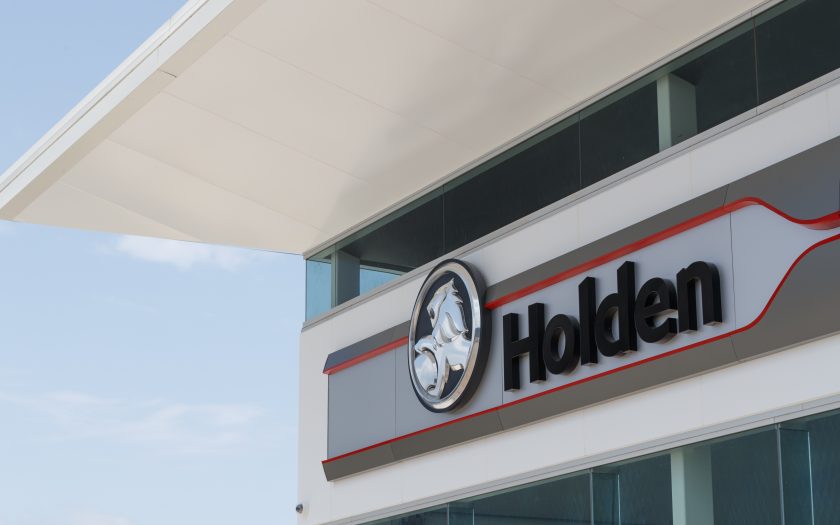IT WAS NEVER GOING to be pretty, but the stoush between GM Holden and its dealers, many of whom stand to lose a substantial amount of their investment, is going to get very ugly before it’s resolved.
The dealers have retained a legal firm, HWL Ebsworth, to negotiate compensation from Holden.
Not surprisingly, GM Holden contends that its Transition Support Program (TSP) is “more than fair and reasonable”, even before the impact of COVID-19 on the economy and industry.
Further, the company contends that the HWL Ebsworth proposal makes “a number of inaccurate claims, assumptions and costs allocations (… and) baseless allegations of unconscionable and misleading conduct which are plainly wrong and unsupported by fact or law.”
seniordriveraus presents Holden’s case without comment or judgement. We’ll leave that to the courts and your own assessment:
Compensation
GM Holden has always considered that its Transition Support Program (TSP) for dealers is fair and reasonable.
The compensation for new vehicle sales was calculated using three fiscal years, 2017 – 2019, and includes highly profitable Commodore units that were produced in Australia. It includes all facets of new vehicle profitability and amounts to $1500 per car. This compensation is over four times what the average dealer made in the new vehicle department over this same timeframe.
HWLE has claimed that such amount should be $6110. The PwC analysis of HWLE’s modelling for such amount identified a number of inaccurate assumptions and cost allocations.
For example, it omitted to factor in dealers’ opportunity to continue the service, repair, warranty and parts activities. Aftersales is typically one of the most profitable parts of a dealer’s business representing on average up to 115 percent of a dealer’s total net profit in 2019.
GM Holden is committed to maintaining an Aftersales operation in Australia for at least 10 years to provide warranty, service and parts to Holden customers.
The HWLE proposal was also wrongly based on 7.7 years of compensation when there is approximately 2.5 years remaining on the current agreement. After the wind down of Holden new vehicle sales, dealers can continue to service and repair vehicles through to the end of the current agreement. If they accept the compensation offer, dealers are also given the opportunity to continue as Holden authorised service operations beyond the current agreement.
PwC, after making appropriate corrections and adjustments, concluded that an appropriate range of compensation is actually $350-1409 per vehicle.
GM Holden’s offer also includes compensation for un-recouped Holden facility investments. These are valued independently and dealt with separately in addition to the compensation offered using the formula discussed above.
Unconscionable and Misleading Conduct Claim
GM and GM Holden flatly reject HWLE’s claims of misleading, deceptive or unconscionable conduct. These claims are based on a bizarre and illogical argument that GM has secretly planned to shut down Holden since at least 2015, but made various significant investments in programs, plans and strategies to support and promote Holden in order to mislead dealers into thinking that there was no secret plan to shut down Holden.
It defies logic to believe that GM intended to close Holden while investing heavily in new or updated right hand drive (RHD) models for the Australian market including Equinox and Acadia, launched new here in 2017 and 2018 respectively, and significantly updated Trailblazer, Trax and Colorado models introduced across a similar period.
In that timeframe GM also launched in Australia its mobility business Maven, its captive finance company Holden Financial Services and invested heavily in the new RHD Corvette to ensure its availability in Australia.
There were also large investments made in marketing campaigns to improve Holden’s brand image and sales, ongoing spending on motorsport and other sponsorships, and significant investments in engineering staff and major upgrades to facilities at the company’s proving ground at Lang Lang in Victoria.
Investments such as these cannot by any logic be held to be the actions of a company that allegedly intended to close through that time.
Those investments and the work undertaken by the Holden team through that period had the same objective: to turn around Holden’s sales and financial performance.
As the company stated on 17 February 2020, ultimately GM came to the very difficult decision that it could not support further investment in growing the Holden business into the future, because it could not meet GM’s investment thresholds.
Case studies
GM Holden presented two case studies which claim to demonstrate the unreasonable nature of the dealers’ claims:
Case Study 1: Medium-sized dealership
For a medium-sized Holden dealership which sold 190 cars in 2019, GM Holden’s per vehicle compensation offer totals $712,500. This significantly exceeds the average medium-sized dealer’s total net profit in 2019 across its business of approximately $200,000. It should be noted the $200,000 figure includes the very profitable service and parts business which dealers will continue to benefit from going forward. In contrast, under the HWLE formula, the compensation for that dealer would be $8,936,930.
Case Study 2: Large-sized dealership
In the case of a large Holden dealer who sold 466 cars in 2019, the per vehicle compensation offered by GM Holden totals $1,747,500. This significantly exceeds the average large-sized dealer’s total net profit in 2019 across its business of approximately $330,000. It should be noted the $330,000 figure includes the very profitable service and parts business which dealers will continue to benefit from going forward. In contrast, under the HWLE formula, the compensation for that dealer would be $21,923,902.
It looks like being a prolonged and bitter fight.
